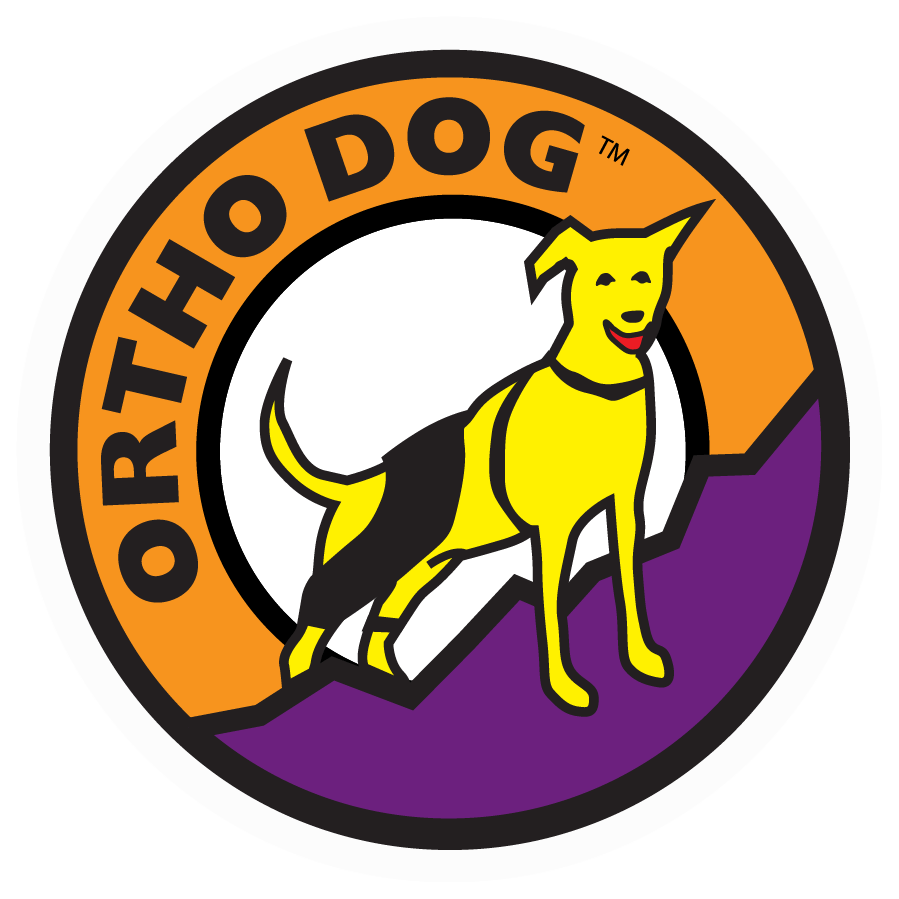Australian shepherds, commonly called Aussies, are known for their high levels of intelligence, loyal and affectionate dispositions, and extremely energetic natures. Aussies are happy to run, hike, and play for hours with their humans. This active breed’s fun-loving personality makes it all the more striking when they start to display signs of pain or discomfort in their hips and hind legs.

There are several skeletal and muscular issues that can cause leg pain in dogs. Canine hip dysplasia (CHD) is one of the most common canine ailments. In a healthy dog’s hips, the ball (top of the femur) and socket (part of the pelvis) fit together, allowing for smooth motion of the hip joint. CHD is a malformation of that joint which causes the ball and socket not to fit together comfortably, resulting in the joint pieces rubbing or grinding together. This is a painful condition that can cause lameness, limping, or degeneration of the joint in extreme cases.
While large-breed dogs are most susceptible to CHD, medium-sized dogs like Australian shepherds are also frequently affected.
Causes of CHD in Australian Shepherds
Dog hip dysplasia is a genetic condition, so puppies born to dogs who have shown symptoms are more likely to develop them over time. Ask your vet to perform a hip check on your Aussie before they breed can ensure that CHD isn’t passed down to new generations. There are also some environmental conditions that can exacerbate the condition, including obesity. Symptom prevention and early treatment starts with a healthy diet and exercise routine.
Australian Shepherd Hip Dysplasia Symptoms
Depending on the severity of the condition, dog hip dysplasia can manifest in many different ways. Some dogs show serious symptoms from an early age (early-onset CHD can affect puppies as young as four months), while others may show little or no signs of discomfort throughout their lives. Some of the most common symptoms include lameness, trouble standing up, limping, a “bunny hop” gait, reluctance to jump up or climb stairs, and a dislike of having the hip area touched or manipulated. In severe cases, loss of muscle mass may occur in affected areas. Symptoms primarily affect the hip area and hind legs.

CHD Diagnosis & Treatment for Your Aussie
The only way to be sure your pet has CHD is by consulting with a veterinarian. A physical exam and X-rays of the hips and pelvis can confirm the diagnosis, and your vet may recommend one of several treatment options depending on how severe the case is.
Suggested conservative treatments may include physical therapy, canine chiropractic, acupuncture, anti-inflammatories, massage therapy, or diet and lifestyle changes. In the most extreme cases, your vet might recommend hip surgery for the best long-term results. Due to a number of factors, invasive surgery may not necessary or appropriate for your dog.
When surgery is not the best option, consider a dog hip brace to improve your furry friend’s quality of life. Ortho Dog’s Hip Hound Brace is designed to provide support to the hips and hind legs, which reduces pressure on the joint to provide pain relief and mobility assistance.

Is a Hip Hound Brace right for your pup?
Designed for dogs who suffer from arthritis and mild to moderate hip dysplasia.
Ortho Dog’s orthopedic brace for dogs stabilizes the hip and lower back areas by holding the head of the femur in the hip socket. A brace can also be helpful as a follow-up to surgery to aid in your Aussie’s healing process. The brace should be on when your Aussie is exercising.
Other Common Australian Shepherd Hip Problems
While hip dysplasia is the most prevalent canine hip issue, there may be other issues if your pup is displaying pain or discomfort in its hips or legs and CHD is not the cause. Panosteitis (sometimes referred to as “growing pains”) is another common issue that occurs in Australian shepherds. It is different from hip dysplasia in that it primarily affects the front legs, is temporary, and affects the long bones of the legs. It is most common in younger dogs, and like CHD, it can result in limping, lameness, swelling, etc.
Hypertrophic osteodystrophy (or HOD) is another growth-related leg issue that causes inflammation of the long bones. Osteoarthritis is a common ailment in older dogs caused by age-related muscle and joint degeneration. Other leg and joint diseases include osteochondritis dissecans (OCD) and Legg-Calve-Perths Disease. Always consult with a veterinary professional for the correct diagnosis before moving forward with any treatment plan for your beloved pet.
It is never fun to watch your dog struggle with hip or leg pain, and it can be especially frustrating to watch pain limit your Australian shepherd’s natural love of running and playing. However, CHD is a treatable condition and there are many options that can ensure your Aussie is able to live a long, pain-free life.


